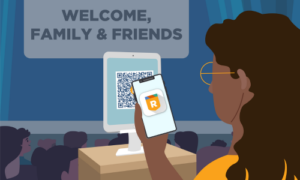Substitute teachers play an important role in our schools, yet they are often forgotten about during school emergency response planning and drills. As Dr. Jaclyn Schildkraut, Associate Professor of Criminal Justice at the State University of New York Oswego, warns, “An emergency is not going to discriminate based on what role you have.”
Substitutes are responsible for keeping their students safe, and schools are obligated to ensure they have the tools and knowledge to do so. By following the recommendations below, schools can better prepare substitutes to keep their students safe, whether an emergency happens in class or on the playground.
Educate on School Emergency Protocols
The Sandy Hook tragedy reminded us how important it is for schools to train and equip substitute teachers for emergency response.
“There was a substitute in my daughter’s classroom,” Michele Gay, co-founder of Safe and Sound Schools, shared during a school safety panel discussion. “She did not have training. She did not have a manual; she did not have a key to lock the door,” Michele continued. Tragically, the substitute teacher, a behavioral therapist, and all 15 students in the classroom lost their lives that day.
Alongside ensuring substitutes have the resources to secure their classrooms, schools should provide them with a copy of the school’s emergency operations plan (EOP) and thoroughly discuss what the substitute is expected to do during various scenarios, like a lockdown compared to evacuation. If the substitute is the first to witness an incident, they must know how to alert the school of the threat. It’s also important that they receive emergency alerts when an incident is initiated.
Schools that use a mobile panic button can accomplish this by giving substitute teachers access to the system. This would enable the substitute—and all school staff—to initiate an emergency from wherever they are located and stay updated throughout response and recovery. Schools should consider including substitutes in drills so they can build muscle memory and practice using the school’s safety software.
Enable Substitutes to Address Localized Incidents
Substitute teachers must know how to respond to and request help for localized, everyday incidents such as a sprained ankle, chemistry experiment gone wrong, or a student who is being defiant.
Some students, assuming substitutes do not know the classroom rules, think that they can get away with certain things like sitting at the wrong desk or verbally threatening others. The pandemic has only made this type of behavior worse, as more students are refusing to follow rules even for their regular teachers. Students have also lost socialization and problem-solving skills, so we are seeing more student fights than ever before. Some of these fights have escalated to school shootings.
Whether it’s a fight or a student acting out, situations like these can quickly get out of control if they are not addressed and resolved quickly. It is important that substitute teachers have the proper communication tools—ideally the same mobile panic button used for large incidents—that enables them to instantly request help from the principal or school resource officer (SRO). If a situation escalates, the mobile panic button should enable users to directly call or text 9-1-1 and automatically share critical details, such as caller name and precise location on campus, with dispatchers.
Learn More K-12 Best Safety Practices
To hear more best practices from our nation’s leading K-12 safety experts, check out Raptor webinars and our podcast, School Safety Today. Both feature safety experts and thought leaders on various topics to help schools stay informed on the latest school safety news and recommendations.
To learn more about how the Raptor School Safety Suite can keep your school—and everyone inside of it—safe, contact us today for a personalized demo.





